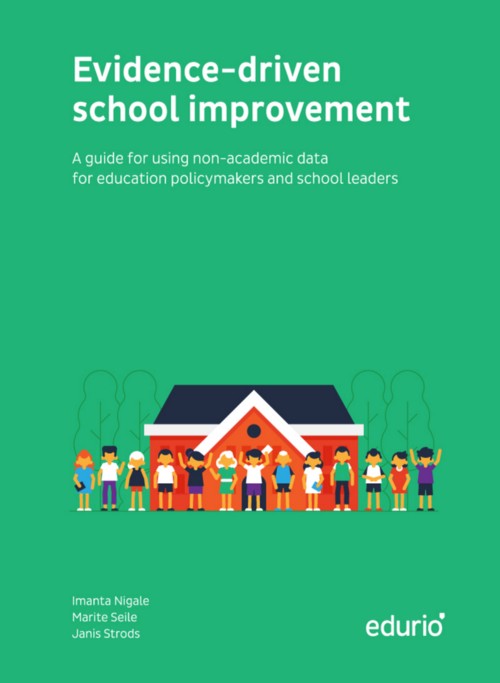Launching this week at the Education World Forum and Bett Show
When we started offering Edurio to schools and school systems a few years ago, we were offering a technology platform to enable them to collect feedback and continuously monitor their schools — without much need for our support in data analysis or survey development.
We quickly realised that while the technology worked and was giving school leaders new insight into their schools, the lack of data or lack of technology was not really their biggest challenge. Integrating new processes into their organisations, changing their approach to decision-making, not overburdening teachers and staff with more data and more work — these were much more complex and much more important. Schools were becoming “data-rich, but information-poor.”
A shift in culture and a shift in processes was the key to making this new approach work and driving school improvement.
The schools and systems we work with across Latvia, South Africa and the UK have evolved and improved in a way that goes far beyond what technology they use. We have been working with them closely, observing and learning from what works and what doesn’t and have developed a guide for policymakers and school leaders to help them lead evidence-driven school improvement in their own schools.

Today at the Education World Forum we are launching Evidence-driven school improvement: A guide for using non-academic data for education policymakers and school leaders.
The step-by-step book aims to guide policymakers and school leaders in school-led, evidence-based improvement by providing a set of tools for gathering the right data, making evidence actionable, and establishing a culture of collaborative inquiry.
Read the foreword to the book below or find the full ebook version here.
Foreword
Gavin Dykes, Programme Director Education, the Education World Forum
Have you noticed how children of a certain age, when working on a complex problem, slowly begin to understand the benefit of changing one parameter at a time. Only then can they and we begin to assess the influence of each parameter. Many children seem to learn that approach through play. Before children, and sometimes adults, reach that stage their response to problems can seem random and finding solutions may seem a bit like looking for a needle in a haystack.
A friend working in biomechanics podiatry talked to me about his approach to addressing diagnosis and treatment. If someone suggests they have posture issues, he first discusses them with the patient. My friend then examines his patient as he or she is lying down. It’s an opportunity to assess for example, if one leg is longer than the other. My podiatrist friend then examines his patient as he or she stands, seeing how they hold themselves and the evenness and comfort of their stance. Then it’s on to examining how they walk, determining the movement of each leg, the roll of each foot and the effectiveness of their gait. With these four sets of information, he begins to have a sense of what might be wrong and how to begin to put it right. Of course, my friend’s information gathering and analysis doesn’t stop there. He suggests a course of action to his patient, and after say 6 weeks meets them again, to determine how the patient has responded, then will adjust actions and meet again until treatment is refined and proving successful. Such approaches are well understood, and it could be said part of the DNA of working in health.
My podiatrist friend and I discussed how gathering and analysing information from “multiple sources” allows triangulation and can build trust in analysis and proposed course of action.
If my first example represents first steps in using information, and my second suggests something significantly more sophisticated, I wonder how we feel about our collection and use of data in education — for learning and for improving our effectiveness. How well do we understand data collection and handling and how sophisticated and well developed are our responses. I admit to admiring health sector’s approaches and how well integrated data gathering and use is in the lives of health professionals. That is why I welcome Edurio’s book which provides ideas for data use in education. I hope it encourages our careful collection of data, our generation of information from that data, our resulting actions and improvements. I hope that it encourages appropriate data use. And I hope that it be a helpful step towards developing a culture evidence-based decision-making among students, parents, teachers, leaders and policy makers.
Perhaps then each of these groups of people, and our sector in general might be able to enjoy the many potential benefits of data gathering and analysis becoming part of education’s DNA too.
This project has received funding from the European Union’s Horizon 2020SME programme for open and disruptive innovation under grant agreement №733984.
No comments.